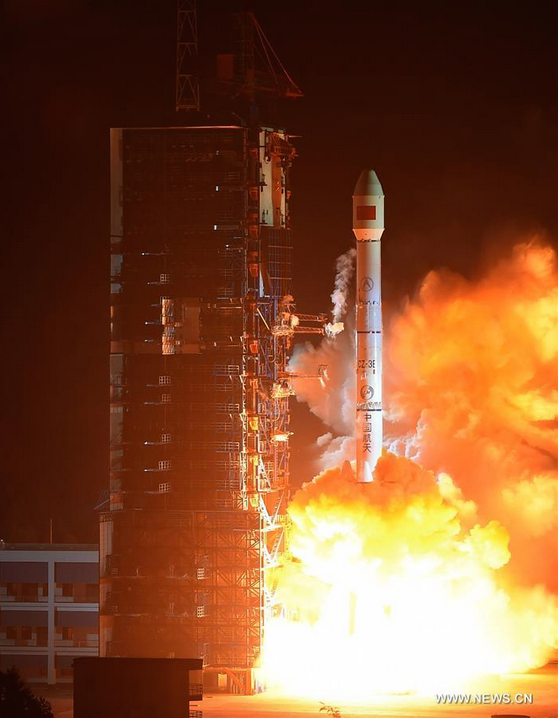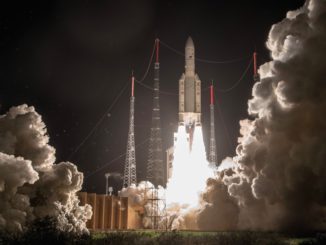
A Long March 3B rocket driven by four strap-on boosters blasted off Wednesday from the Xichang space base in southwestern China, successfully delivering a communications payload to orbit a half-hour later to likely begin service for the Chinese military.
Nestled inside the Long March rocket’s nose cone, the Chinasat 1C spacecraft launched at 1646 GMT (11:46 a.m. EST) Wednesday from Xichang, China’s primary launch base for communications satellites, according to the official Xinhua news agency.
Xinhua reported the satellite was built by the China Academy of Space Technology, a state enterprise that builds most of China’s communications spacecraft. It is probably based on the DFH-4 satellite bus, the latest in the manufacturer’s line of spacecraft platforms.
Chinasat 1C will provide high-quality voice, data, radio and television transmission services, according to Xinhua.
Western analysts believe the satellite is a follow-up to the launch of a similar craft named Chinasat 1A in September 2011, likely beaming secure communications signals for the Chinese military.
Tracking data from the U.S. military showed Wednesday’s Long March launch reached a geostationary transfer orbit with a high point about 35,800 kilometers (22,245 miles) above Earth and a low point of approximately 177 kilometers (111 miles). The orbit data indicated an inclination of about 27.1 degrees to the equator.
Wednesday’s mission was the 17th space launch of the year by China, and the 73rd space launch worldwide to reach orbit in 2015.
Email the author.
Follow Stephen Clark on Twitter: @StephenClark1.



